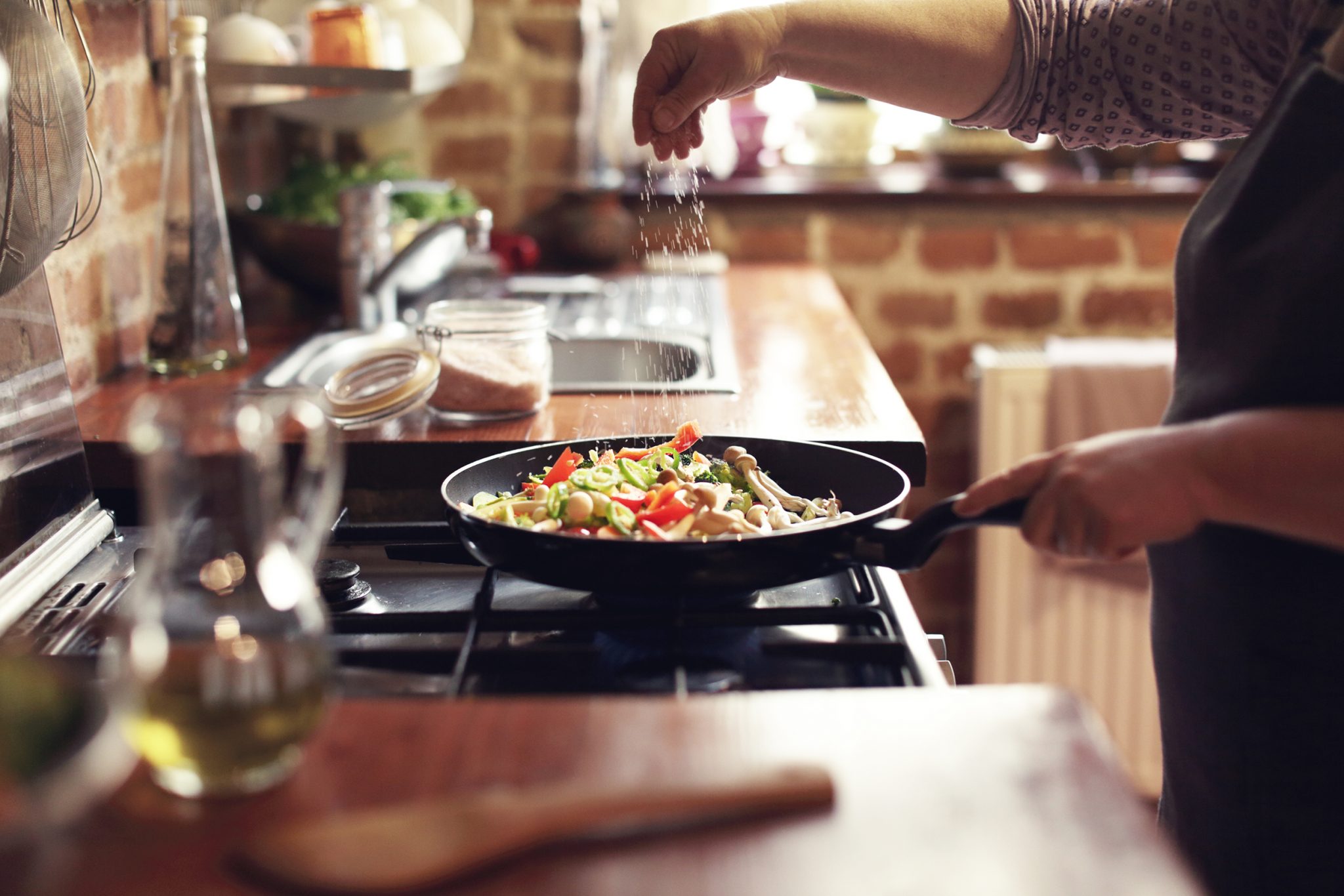You wash your hand before cooking and don’t cut uncooked vegetables and uncooked meat at the same cutting board. That’s basically all you need to recognize approximately meals safety, right? Wrong. One out of every six Americans gets food poisoning every 12 months, and those are just those who file it. While some people spend a miserable night at home inside the bathroom, 128,000 people are hospitalized and 3,000 die each year from foodborne illnesses. We often underestimate the risks of unworn pathogens in the kitchen at the same time as demanding a little an excessive amount of about the benign bacteria in our usual environment. But how are we able to recognize while we are placing our fitness at hazard? Here are 11 food-safety mistakes you don’t know you are making — and the way to restore them immediately.
Cutting Melons without Washing Them First
You vicinity a perfect-looking cantaloupe on a smooth cutting board and cut into it with a sharp knife. You can also have simply dragged dangerous microorganisms from the outside onto the piece you are about to eat. If this appears like you, you are not alone. In a 2010 Food and Drug Administration (FDA) survey of 4,500 people, almost 100% of humans polled said they rinsed tomatoes before making ready or consuming them, but simplest 51% stated they do the identical for cantaloupe. One 12 months later, dirty cantaloupe have been implicated in a Listeria outbreak that killed 33 people and sickened almost 150. All uncooked produce can harbor harmful bacteria on the outside.
Rinse produce under cool, strolling water before peeling, cutting, cooking or eating. Use a produce brush to scrub firm end result and greens like melons and cucumbers.
 Overstuffing Your Refrigerator
Overstuffing Your Refrigerator
Your fridge is jam-packed and you cannot have another factor inside. Except, somehow, you continually find a little extra room. Since bloodless air can’t circulate, your fridge warms up and invisible micro organism starts developing more unexpectedly. Most refrigerators do not show real temperatures (just temperature settings), so that you cannot inform it is happening.
Set the temperature at 40 degree Fahrenheit or under and put a cheaper appliance thermometer inside the fridge so that you can reveal the temperature and regulate as necessary, recommends the FDA. Avoid over packing your refrigerator to allow bloodless air to circulate.
Having One Sponge and Never Disinfecting It
You wipe down the counter and clean your dishes with a sponge. Then you allow it sit down damp in a thin pool of water at room temperature until you need to smooth again. You have made a microorganism maternity ward.
Washing Raw Chicken
You give the raw chicken an awesome rinse inside the sink before cooking. Now you, your sink and your counters are protected in invisible fowl bacteria.
Don’t wash your chicken. Whatever is left at the bird by the point you buy it’ll get cooked off inside the oven. If you wash it, irrespective of how slowly you run the water, you mobilize the bacteria, splash them over your prep region and increase your risk of having ill from cross-contamination.
Storing Eggs in the Refrigerator-Door Egg Holder
The refrigerator got here with an on hand egg compartment inside the door, so that you use it. But there are a few issues with this. First, the door is the warmest part of the refrigerator and you could not inform while your eggs expire. Also, you chance to get microorganisms in your refrigerator.
Store eggs in the coldest part of the fridge to inhibit bacterial growth, advises the American Egg Board. The refrigerator door isn’t secure due to the fact the temperature fluctuates each time it is opened and closed.
Believing Clear Juice Equals Cooked Chicken
To check if chicken is cooked, you chop right into a piece. If the juice is clear, you decide it is done. Unfortunately, that’s no longer enough proof, and you may be serving up undercooked chicken with an aspect of salmonella.
Use a food thermometer and cook chicken until it reaches an inner temperature of 165 degrees Fahrenheit. There’s no other manner to make certain it is “done.” While two-thirds of Americans report proudly owning a meals thermometer, handiest 17% constantly makes use of it to cook chook, and nearly half in no way use one at all. Undercooked chicken is related to nasty bacteria.
Thawing Meat on the Kitchen Counter or in Hot Water
While your meat defrosts at the counter, the outer layer warms to a temperature at which microorganism swiftly multiply at the same time as the interior continues to thaw. A hot-water bath isn’t any better. Plus, you may make “pathogen soup,” a powerful bowl of microbes which could without difficulty cross-contaminate the kitchen.
There are three safe ways to thaw meat in the fridge. It may additionally take an afternoon to defrost small quantities of meat like boneless chicken breasts. After thawing, floor meat and poultry ought to continue to be secure for an afternoon or two, and cuts of red meat like beef and pork hold for 3 to 5 days, consistent with the US Department of Agriculture.
 Judging Leftovers by Taste, Sight or Smell
Judging Leftovers by Taste, Sight or Smell
Your leftover stir-fry has been sitting in the fridge for 6 days, but it still looks fine, so that you have it for lunch. Unfortunately for you, the styles of microorganisms that purpose food poisoning do not affect the smell, flavor or appearance of food.
Either freeze or remove leftovers within 3 to 4 days.
Not Washing Your Hands earlier than Washing Produce
You seize lettuce and tomatoes from the fridge and rinse them in walking water. But if you have not first very well washed your hands, you will simply transfer bacteria onto the produce, rushing your desirable intentions.
Wash your palms with cleaning soap and heat, running water for 20 seconds earlier than getting ready or ingesting food. Make positive to get your wrists, the back of your arms, between your arms and below your fingernails too.
Using the Same Tongs for Raw Meat and Cooked Meat
You move raw burger patties from a platter to the grill surface. When they may be done, you use the same tongs to transfer the cooked meat onto a clean serving platter. Your contaminated tongs have slathered bacteria onto your flawlessly cooked burgers.
Use unique utensils to locate uncooked meat, seafood or poultry on the grill and take it off. If you best have one set, wash it very well in heat soapy water earlier than the use of it again. Dirty utensils can switch probably dangerous bacteria and their juices onto your cooked food.
Rinsing Pre-Washed Greens
The bag says “triple washed,” however you want to offer it one more rinse to be safe. Any microorganism lurking where you’ve got rewashed the greens has now connected itself for your salad.
Use pre-washed veggies directly from the bag as intended. Recently, a panel of produce-safety specialists reviewed the available studies and hints and concluded that packaged salads labeled “washed,” “triple-washed,” or “equipped to eat” do not want an additional rinse.






